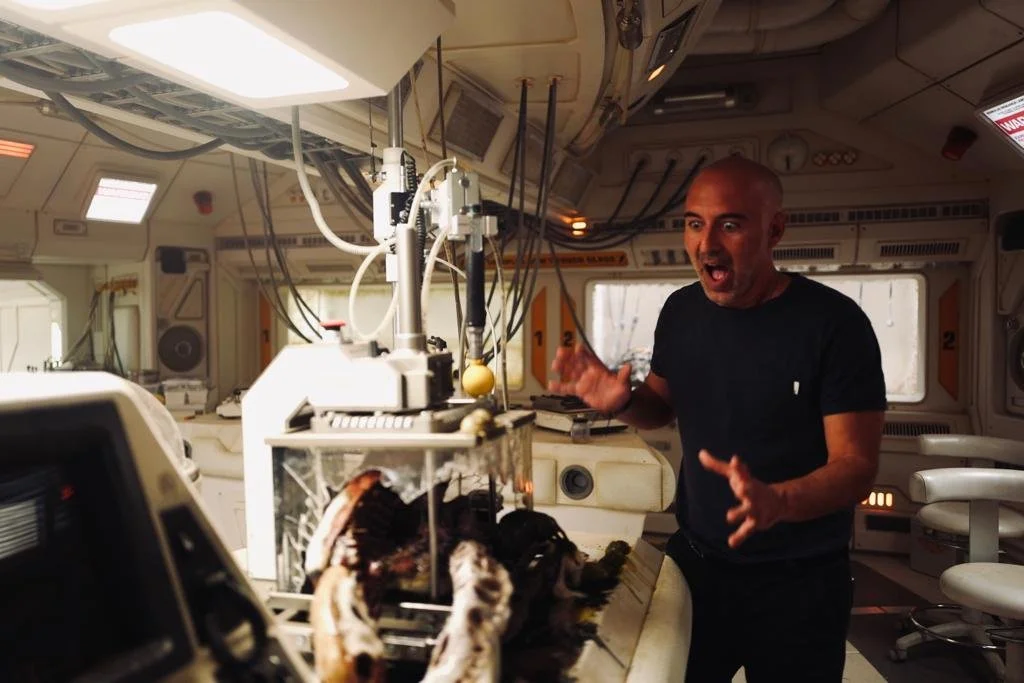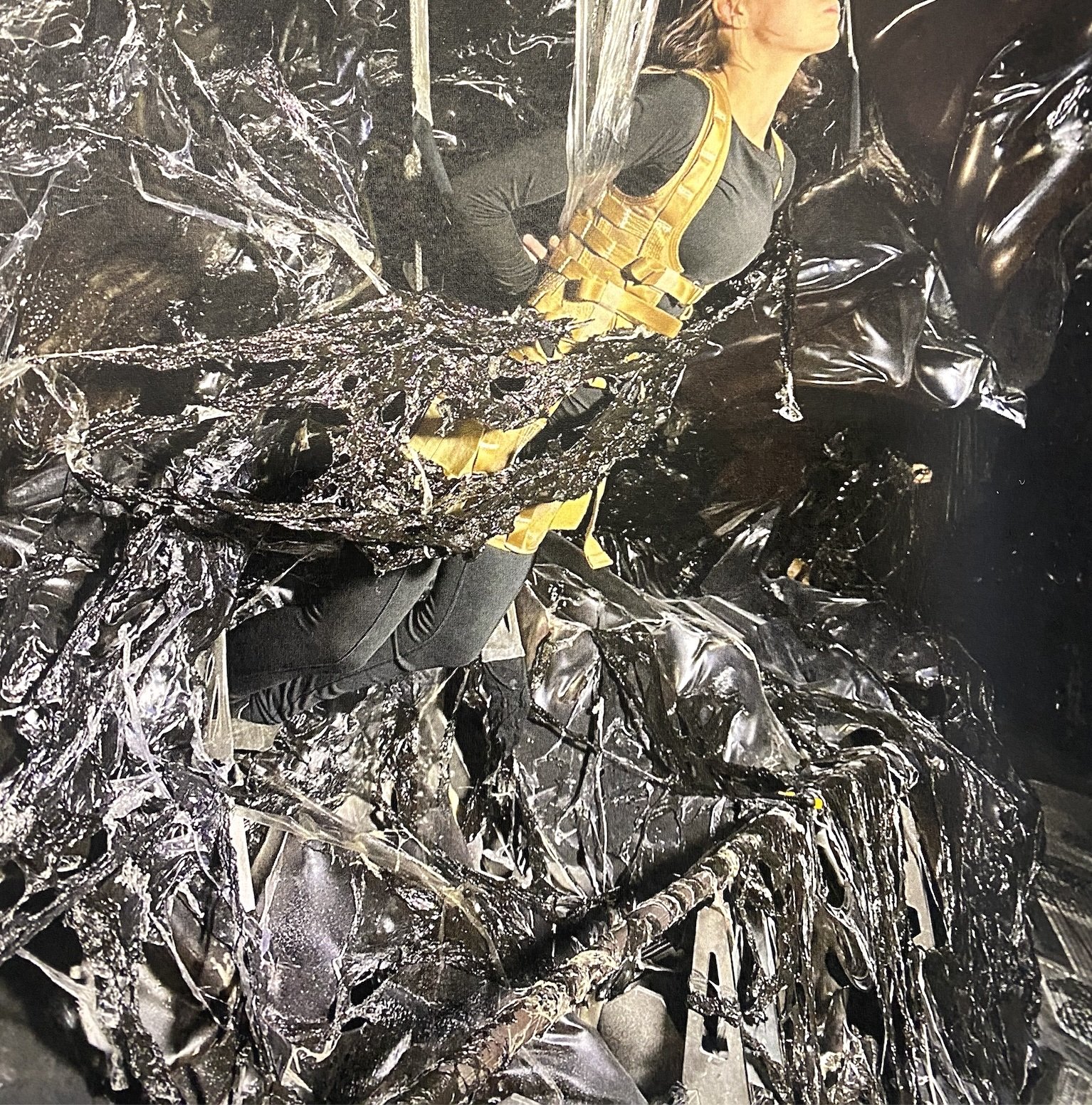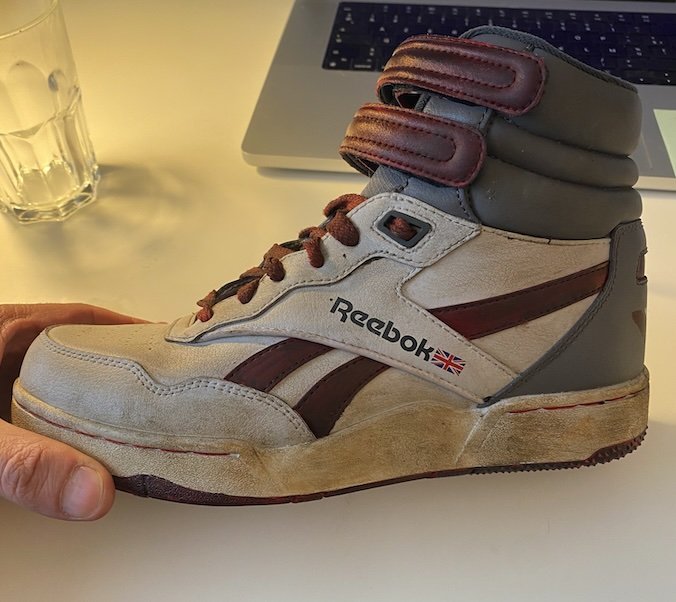Retro Scare with Alien’s Recent Odyssey “Alien: Romulus”
Synchronicity at play: Carlos Rosario costume designs his first fright
BY MARCIA SCOTT
David Jonsson as Andy in 20th Century Studios' ALIEN: ROMULUS. Photo courtesy of 20th Century Studios. © 2024 20th Century Studios. All Rights Reserved
Carlos Rosario and his team walked away with an Emmy, CDG, and CAFTCAD awards for the incredible work they produced revisioning a 17th century Japanese society for Shōgun.
Bespoke Magazine welcomes the CAFTCAD award recipient for the Horror Issue.
Rosario’s journey as a costume professional has been rewarding but who would have thought years later, the film he watched in the era of VHS would be his introduction to designing for a horror franchise. This is the case for his fourth collaboration with Fede Alvarez, which took him on the Alien odyssey. The international costume designer’s generosity and care is evident in the course of this interview.
Costume Designer Carlos Rosario inside the laboratory set. Photo Credit: Monica Alberte
What is the first horror film you remember watching? Did it have an influence on you in any way?
The first horror movie I remember watching was Alien. I was about 13 years old when a friend gave me the VHS tape. It frightened me so much that I could only watch it during the day and stopped every 15 minutes to catch my breath. I couldn't handle the feeling of pure fear I felt as I was watching the story unfold, seeing all the characters die, one after the other. I think it took me nearly two entire weeks to watch that movie.
Another horror film that also impacted me was Freddy Krueger: A Nightmare on Elm Street 3: Dream Warriors. I couldn't sleep for 3 months afterwards. I was convinced that something or somebody was hiding under my bed.
I had so much imagination as a boy. I realized I had to avoid watching horror movies. I'd always been intrigued by them, but never really enjoyed them. They activated too many of my fears.
I also remember watching Earthquake with Ava Gardner. It's not really a horror movie, but to me it was. It scared me so much that my bed was completely soaking wet when I woke up the next morning. I’d spent the entire night shaking and sweating. And what about Jaws? My dad had a sailboat and that movie definitely ruined all my summers even when the water was crystal clear!
Anything that impacts you deeply when you’re young has some kind of influence on you when you grow up. Very early on, horror movies revealed to me the depth of my emotions. However, it's fascinating that it's always what I'm looking for when I work on a movie... I love contributing to projects that provoke intense emotions... I love helping to bring life out of places where we might feel numb or bored.
Were you a fan of the franchise before working on this?
Absolutely! Alien has always been one of my favorite franchises. I've seen all of those movies many times. So, when Fede Alvarez, our director, contacted me, I was absolutely in shock. I’d never thought that my name would one day be associated with the Alien franchise. That was definitely a dream come true.
Is the horror genre something you were / still interested in? What attracted you to this script?
Fear had a different meaning when I was younger. Horror films were more psychological and suspenseful and had a very solid storyline...You really connected to the characters and cared deeply about them. Things have changed since then. Horror films are not as substantial as they used to be. I think the shock value and the aesthetic of the movie have become the priorities over the emotional fulfillment of the audience.
Nonetheless, I've always been interested in the visual aspect of horror movies. I’ve always felt it was a great way to start your career as a costume designer. Horror movies usually have smaller budgets, but look super stylish. Someone at the beginning of their professional life has a good chance at being hired on one. Some of these films can become very successful at the box office, which can help ignite your career. Since they are always so well-made, they add something very valuable to any resume.
Aileen Wu as Navarro in 20th Century Studios' ALIEN: ROMULUS. Photo courtesy of 20th Century Studios. © 2024 20th Century Studios. All Rights Reserved
Several different things attracted me to this script. First, this was my fourth collaboration with Fede Alvarez, so I was really excited to be part of his team again. I was obviously thrilled to be part of the Alien franchise, chosen to dive into a world that not many have the privilege to be part of. The script was a great combination of pure horror and lots of action, which I thought was perfect for the modern audience.
I loved the 80s vibe that Fede also wanted to bring back. Keeping the costumes grounded in reality was so exciting to me. In particular, designing the gritty colony was something I was really looking forward to creating.
Romulus was prepped in Eastern Europe where it seems to be a hub for sci-fi or horror film production. Were you influenced in any way by working there or the environment?
We mostly shot on sound stages, except for the exteriors in the beginning. Budapest is the perfect place to design costumes for this style of project. It really puts you in the right mood, especially when you’re shooting in winter. It is a very beautiful city with incredible architecture. Not many buildings have been renovated, so visually it's very dark and rough, which feels conducive to designing costumes for horror and sci-fi movies.
Before starting this project did you know the name John Mollo (CD of the original Alien)? Were you inspired by anything in the original instalment?
Yes, I knew who John Mollo was, but I’d never looked closely at his work until I had to prep the costumes for Alien: Romulus. Our movie was set between Alien and Aliens, so it was important to go back and study what he’d done. My designs needed to be an extension of his vision, keeping the costumes 80s inspired, but ensuring that the overall look would appeal to a modern audience.
Disney was very strict about respecting the first installment, so we needed to keep a few things in mind. For example, we had to use the exact same colors on our patches that Mr. Mollo had selected for his.
Hazmat suit made out of latex with scientific Renaissance rubber patch. Image courtesy of Carlos Rosario.
Acid texture on Bjorn's T-shirt with blood rigging incorporated. Image courtesy of Carlos Rosario.
You previously collaborated with Fede Álvarez on Don't Breathe; was there any difference in your process in preparing a psychological horror compared to sci-fi horror?
Yes, Alien was definitely much more technical. We had to figure out what the costumes needed to achieve in order to make the death of every character believable, all while working very closely with VFX, Make-up and Hair. Don't Breathe was much more linear. The creative aspect was subtler, predominant and grounded in reality. In that film, we had to focus on studying the characters and creating costumes that were in alignment with their respective backgrounds.
But both projects required a lot of multiples. In that regard, they were very similar.
Some of the 25 duplicates made for Rain and Navaro's costumes. Image courtesy of Carlos Rosario.
I think readers will particularly be interested in hearing about your (costume department's) collaboration with other departments: production design, cinematographer, sfx, vfx, H&M, props that might be insightful for a successful prep of a project like this. Could you expand? Cast interaction might also be brilliant examples?
I mostly collaborated with VFX, H&M and props on Alien. My work was the extension of any of those departments and vice versa. It was important to work closely with H&M so that whatever textile work we incorporated onto the costumes (e.g., the texture dissolved by acid, blood, dirt, etc) was then carried onto the skin and hair to be as realistic as possible. That process also included VFX, who helped us amplify any of the desired effects.
Our characters’ deaths heavily impacted the costumes. We had to work closely with VFX to understand what prosthetics would be used. Sometimes it required the costumes to be divided into three or more sections in order to fit the actor’s body as well as the prosthetics. It was a very complicated process.
Acid-eaten texture on Rook's costume, created by Shane Mayan and team at Legacy Effects. Image courtesy of Carlos Rosario.
Test with harness worn by one of Kay’s main stunt doubles on the hive set. Image courtesy of Carlos Rosario.
These types of projects need a lot of multiples, requiring us to constantly be in touch with the stunt department so that we could successfully incorporate the different types of harnesses and padding inside the costumes.
Alien: Romulus also had a lot of zero gravity scenes; the trigger points on the harnesses were difficult to figure out. They kept changing based on the movements, making the process of aligning the creative and technical aspect of the costume very difficult.
I had to face many challenges on this project that I'd never met before. Constant communication with our director and all the other departments was incredibly important. Not knowing what the answer is or how to proceed is also okay. Movies could be compared to finding the different pieces of a puzzle and putting them in the right places... It takes time and patience, but ultimately an honest collaboration with the other departments allows you to achieve the results you need.
Cailee Spaeny as Rain Carradine in 20th Century Studios' ALIEN: ROMULUS. Photo courtesy of 20th Century Studios. © 2024 20th Century Studios. All Rights Reserved
Can you speak to the technical challenges you might have had with spacesuits, helmets, etc. ?
The spacesuit was made with built-in practical effects that were challenging to execute. They were constructed with interchangeable parts that could be swapped out between takes, which ensured the continuity of the suit’s appearance. This costume included an integrated air flow system as well as a controllable, programmable interior lighting system in the helmet which perfectly illuminated actor Cailee Spaeny’s face. The chest piece and helmet were made for easy removal. And along with designing functional wrist rings that enabled the spacesuit gloves to completely detach with a twist in-camera, we applied a realistic, rusted finish to all of the metal components. In addition to using several heavy, waxed cotton fabrics that broke down really well, giving us the effect I was looking for, we also incorporated an in-camera effect that made it appear that the suit was actually compressing itself around the actor.
Spacesuit for the lead character Rain, executed by Joshua Balster and his team at SCPS. Waxed cotton fabrics were chosen to ensure the suit would break down well and achieve a gritty look. Image courtesy of Carlos Rosario.
Spacesuit helmet for Rain, executed by Joshua Balster and his team at SCPS. Image courtesy of Carlos Rosario.
What are you proudest of looking back on this project?
Definitely the spacesuit. It was the first time I had designed such a complicated costume. It was beautifully executed and exactly the way I’d envisioned it.
I was also very proud of the latex hazmat suits we designed for the opening sequence. The right construction was not easy to figure out - latex is very heavy - but I was very happy with the final result and felt those costumes were very appropriate for the first scene. I was also delighted that I was able to design some 80s sneakers for our lead character, Rain. I worked in collaboration with "Reebok", and those sneakers then sold out online in a couple of minutes.
Reebok Collaboration for Rain. Image courtesy of Carlos Rosario.
How did you apply creativity to what seems like a project based on solving technical challenges ?
Creativity can be applied to any task, even when solving technical challenges. While it requires a more intellectual approach, it can still be highly creative. For the Chestburster scene, we needed to create a version of Navarro's Hawaiian shirt, 10 times larger than the original, for close-ups. I designed the fabric for the shirt, and scaling it up meant creating a larger pattern that stayed proportionally aligned with the rest of the costume.
Similarly, my team and I had to find creative ways to divide some costumes into three sections, incorporating both the actor's body and prosthetics. Technical challenges often leave you unsure of what will work, so you have to explore various directions, and that’s where creativity truly comes into play.
Costume illustration of Navarro by James Casey Holland. Costume designed by Carlos Rosario.
Navarro's shirt sized up for Chestburster scene. Image courtesy of Carlos Rosario.














